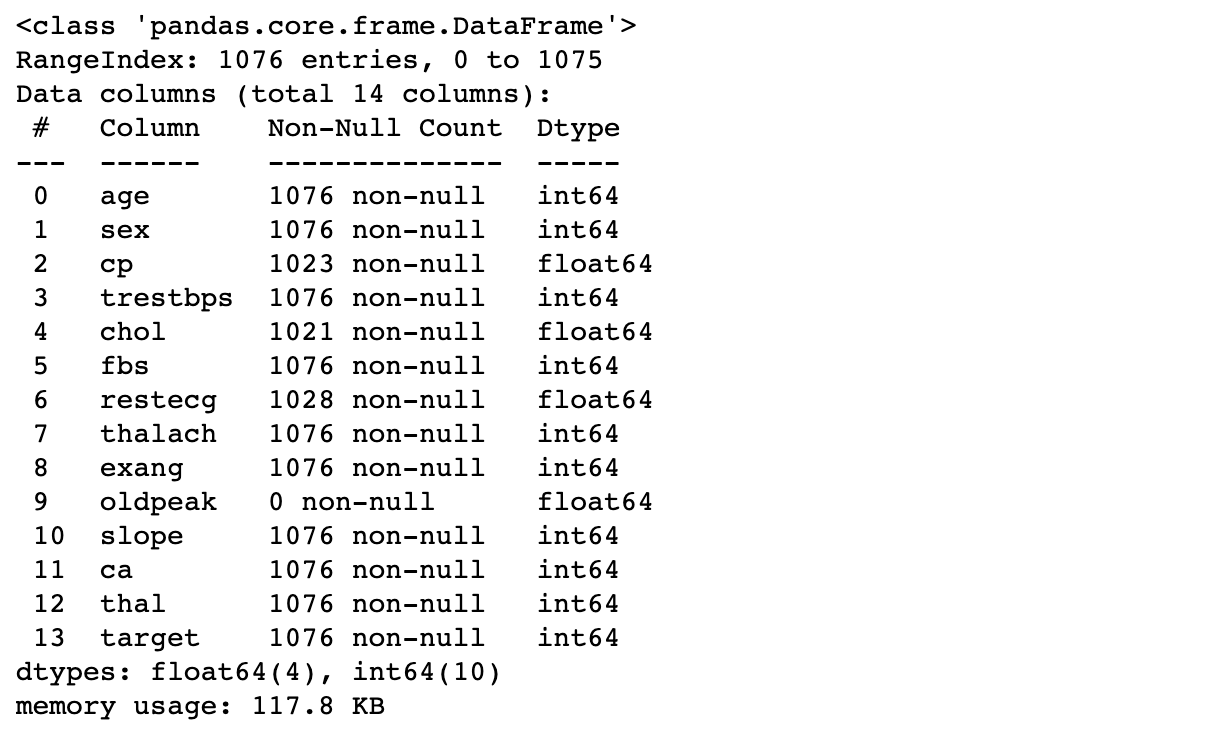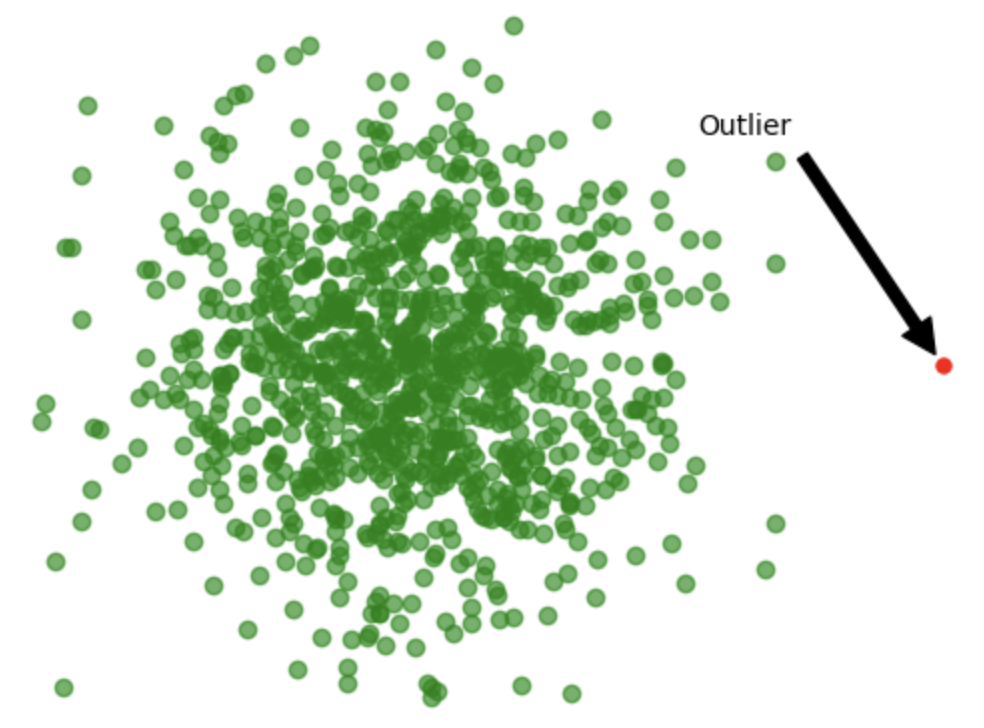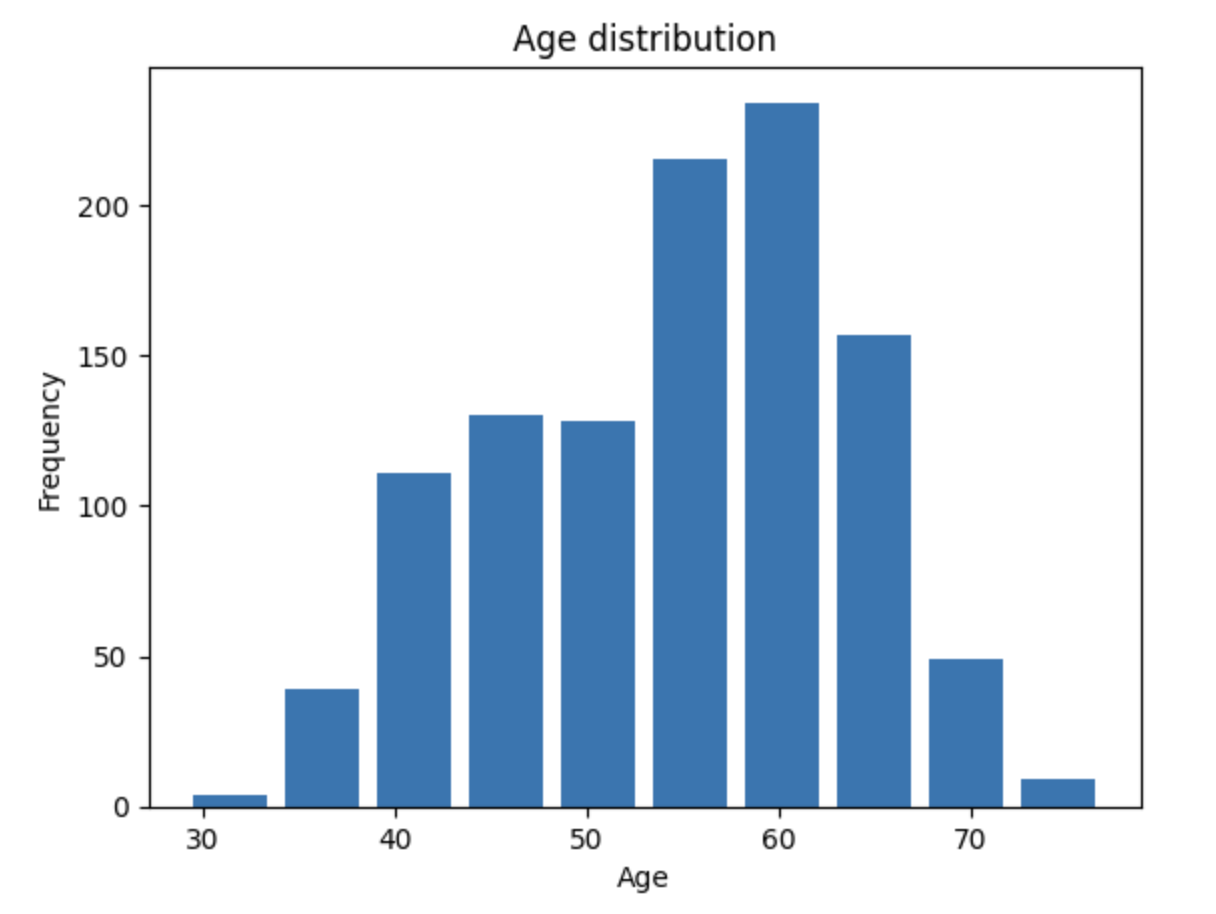Exploratory Data Analysis
End-to-End Machine Learning

Joshua Stapleton
Machine Learning Engineer
The EDA process
- Examine and analyse the dataset
- Understand the dataset
- Visualize the dataset
- Characterize / classify the dataset

Understanding our data
df.head()
- Shows first rows of the dataset
- Provides snapshot of data's structure
# Print the first 5 rows
print(heart_disease_df.head())

df.info()
- Summarizes features
- Shows non-null entries and feature types
# Print out details
print(heart_disease_df.info())

Class (im)balance
df.value_counts()
- Counts number of unique occurrences of each class
- Class: binary presence of heart disease (1/0)
- Important for modeling
# print the class balance
print(heart_disease_df['target'].value_counts(normalize=True))

Missing values
- Can lead to errors
- Unrepresentative, biased results
Use df.isnull()
- Checks for null/empty/missing values
- Applied to column or collection of columns
Usage
# check whether all values in a column are null
print(heart_disease_df['oldpeak'].isnull().all())
True
Outliers
Anomalous values
- Measurement errors
- Data entry errors
- Rare events
Can skew model performance
- Model learns based on extreme values
- Doesn't capture general data trend
Sometimes can be useful:
- Rare values
- Detection: use boxplot, or IQR

Visualizing our data
Visualizations show:
- General trends
- Missing values and outliers
Other types of visualizations:
- Kernel density estimation
- Empirical cumulative distributions
- Bivariate distributions
df['age'].plot(kind='hist')
plt.xlabel('Age')
plt.ylabel('Frequency')
plt.show()

1 https://seaborn.pydata.org/tutorial/distributions.html, https://app.datacamp.com/learn/courses/intermediate-data-visualization-with-seaborn
Goals of EDA
Understand the data
- Are there any patterns?
- Eg: do men have higher rate of heart disease?
Detect outliers
- Does any data fall outside what is acceptable?
- Are there incorrect or missing values?
Formulate hypotheses
- What should we expect from the data?
Check assumptions
- Does what we expect line up with reality?
Let's practice!
End-to-End Machine Learning

